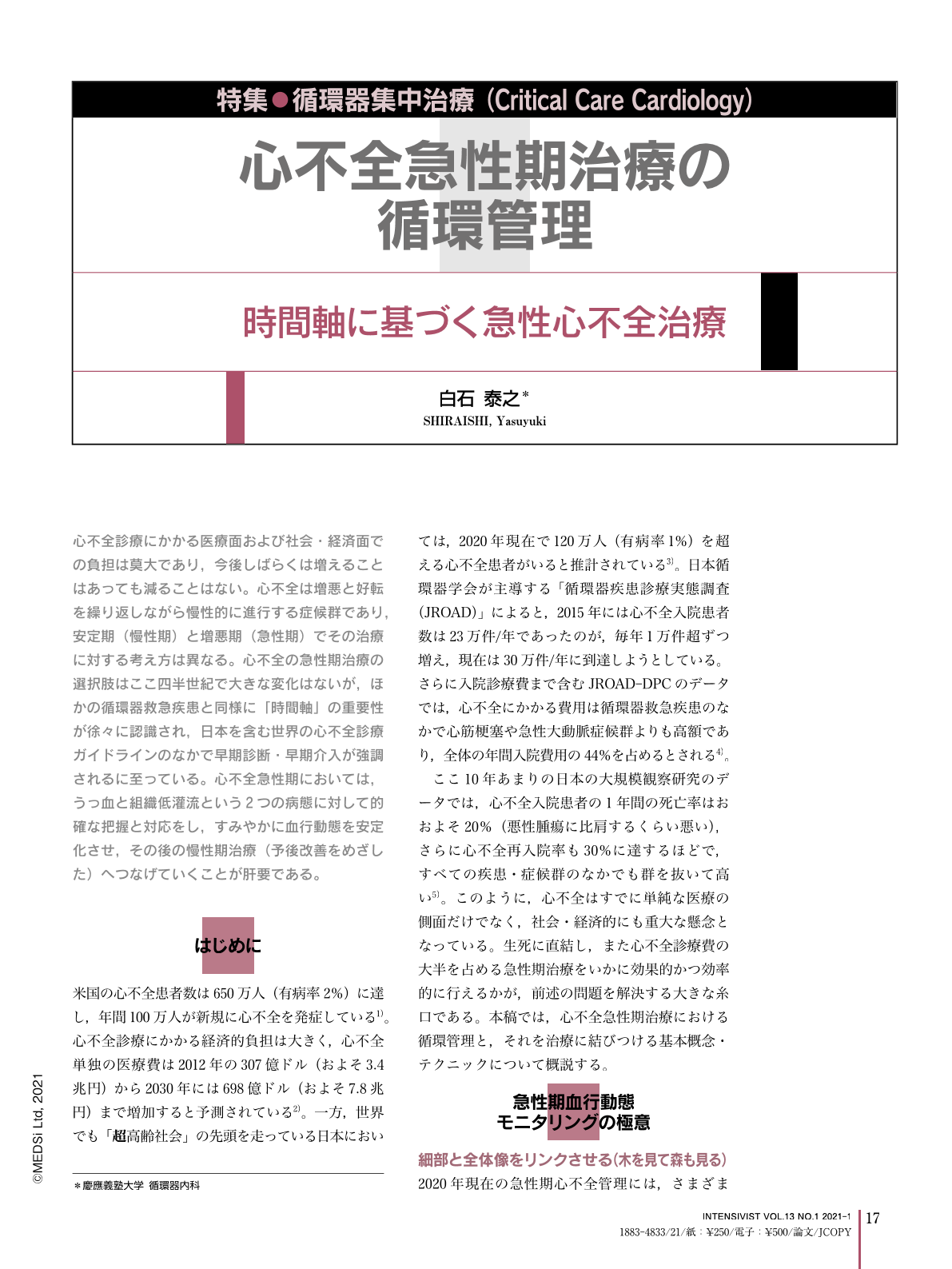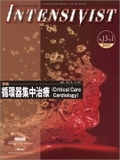Japanese
English
- 有料閲覧
- Abstract 文献概要
- 1ページ目 Look Inside
- 参考文献 Reference
心不全診療にかかる医療面および社会・経済面での負担は莫大であり,今後しばらくは増えることはあっても減ることはない。心不全は増悪と好転を繰り返しながら慢性的に進行する症候群であり,安定期(慢性期)と増悪期(急性期)でその治療に対する考え方は異なる。心不全の急性期治療の選択肢はここ四半世紀で大きな変化はないが,ほかの循環器救急疾患と同様に「時間軸」の重要性が徐々に認識され,日本を含む世界の心不全診療ガイドラインのなかで早期診断・早期介入が強調されるに至っている。心不全急性期においては,うっ血と組織低灌流という2つの病態に対して的確な把握と対応をし,すみやかに血行動態を安定化させ,その後の慢性期治療(予後改善をめざした)へつなげていくことが肝要である。
Heart failure is a significant public health burden, affecting more than 1.2 million adults in Japan, associated with high morbidity, mortality, impaired health status, and cost. Primarily, the hospitalization and acute-phase management of heart failure, especially of acute heart failure, presents challenges to health care systems while necessitating substantial efforts to achieve favorable outcomes. The treatment options for acute heart failure have remained relatively unchanged over past decades, however, recent studies have shown that the management of acute heart failure is “time sensitive” and suggested that treatment selection according to individual etiologies, triggers, and risk profiles could lead to better outcomes. Within this clinical context, it is of paramount importance that clinicians need to classify each patient by pathophysiological phenotypes, i.e. pulmonary/systemic congestion and tissue hypoperfusion, and to promptly provide appropriate interventions to stabilize the hemodynamics, following by evidence-based therapeutics for improving long-term outcomes of patients with heart failure.

Copyright © 2021, MEDICAL SCIENCES INTERNATIONAL, LTD. All rights reserved.


